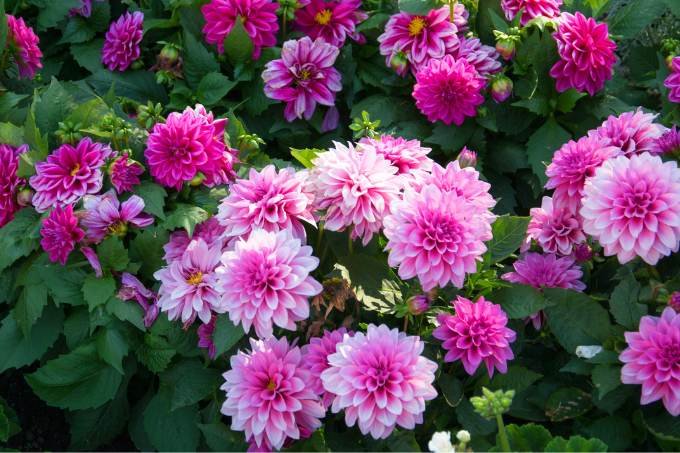Selecting the right flowers for your garden isn’t just about aesthetics; it’s about choosing plants that can thrive in your specific climate. Understanding your region’s weather patterns, temperature ranges, and rainfall can help you select flowers that will flourish year-round. Here’s a guide to help you choose the best flowers for your garden based on your climate.
1. Understand Your Hardiness Zone
The first step to selecting the best flowers for your garden is knowing your USDA Hardiness Zone (or the equivalent in your country). These zones indicate the average minimum temperature for an area, helping you determine which plants are likely to survive the winter.
- Cold Climates (Zones 1–5): Look for flowers that can tolerate frost and freezing temperatures.
- Mild Climates (Zones 6–8): A wider variety of plants can thrive, from perennials to annuals.
- Warm Climates (Zones 9–13): Choose flowers that can withstand high temperatures and occasional drought.
Tip: Consult your local nursery or gardening center to confirm which flowers match your zone.
2. Best Flowers for Hot, Dry Climates
In regions with hot, dry climates, you’ll need flowers that are drought-tolerant and can handle intense sunlight. These flowers typically have thick leaves or silvery foliage that helps them retain moisture.
- Top Choices:
- Lavender: A hardy perennial that thrives in dry, sunny conditions.
- Zinnias: These vibrant, drought-resistant blooms come in a variety of colors.
- Coneflower (Echinacea): Tough and heat-resistant, coneflowers are perfect for full-sun gardens.
- Sedum: A succulent that can store water in its leaves, ideal for rock gardens and xeriscapes.
Tip: Use mulch to help retain soil moisture and protect the roots of your plants from the harsh sun.
3. Best Flowers for Cold Climates
For cold climates, focus on flowers that can survive freezing temperatures, snow, and frost. These hardy flowers tend to bloom in the cooler months and can often be perennial, coming back each year.
- Top Choices:
- Pansies: One of the best flowers for cold climates, pansies can survive frost and bloom in early spring.
- Snowdrops: These delicate white flowers are one of the first signs of spring, blooming even before the snow melts.
- Hellebores: Also known as the Christmas rose, this plant blooms in late winter or early spring.
- Daylilies: Hardy perennials that can withstand both cold winters and warm summers.
Tip: Plant cold-tolerant flowers in areas with good drainage to avoid waterlogged roots during winter.

4. Best Flowers for Tropical Climates
In tropical and humid climates, flowers need to handle consistent heat and frequent rain. These flowers often have vibrant colors and large blooms, thriving in the warm, moist environment.
- Top Choices:
- Hibiscus: Known for its bold, tropical blooms, hibiscus loves warm, humid climates.
- Bird of Paradise: With its striking shape and exotic colors, this plant thrives in tropical gardens.
- Bougainvillea: A hardy, fast-growing climber with colorful bracts that add a dramatic splash to any garden.
- Plumeria (Frangipani): Famous for its fragrant flowers, plumeria does well in tropical areas with lots of sunshine.
Tip: Ensure your tropical plants have plenty of water, but watch out for poor drainage, which can lead to root rot.
5. Best Flowers for Temperate Climates
Temperate climates enjoy a mix of warm summers and cool winters, offering a longer growing season and a wider range of flowering options.
- Top Choices:
- Roses: These classic blooms thrive in temperate climates with well-drained soil and plenty of sunlight.
- Daffodils: Blooming in early spring, daffodils add bright pops of yellow to temperate gardens.
- Peonies: With their large, fragrant blooms, peonies are a favorite in temperate regions.
- Lilies: Hardy and versatile, lilies can grow well in the mixed temperatures of temperate climates.
Tip: Pay attention to the growing seasons of flowers in temperate climates. Plant a mix of early-blooming and late-blooming varieties to enjoy flowers throughout the year.
6. Consider Seasonal Variations
Some flowers thrive during specific seasons, and understanding these cycles is key to creating a garden that blooms throughout the year.
- Spring Bloomers: Tulips, daffodils, and crocuses are perfect for spring gardens.
- Summer Bloomers: Sunflowers, dahlias, and marigolds thrive in the heat of summer.
- Fall Bloomers: Chrysanthemums and asters are ideal for adding late-season color.
- Winter Bloomers: Hellebores and winter jasmine can provide color in colder months.
Tip: Stagger your plantings to ensure your garden remains vibrant and colorful throughout the seasons.
7. Soil and Microclimates
While climate is important, don’t forget about your garden’s microclimate and soil conditions. Certain areas of your garden may receive more sunlight, wind, or rain than others, creating small variations in climate. Choose flowers that suit these microclimates for the best results.
- Dry, Rocky Soil: Lavender, succulents, and sedums do well in these conditions.
- Moist, Rich Soil: Hydrangeas and ferns love consistently damp, fertile soil.
- Full Sun Areas: Sunflowers, daisies, and marigolds thrive in full sun.
- Shaded Areas: Hostas, impatiens, and begonias flourish in the shade.
Tip: Test your soil to determine its pH and nutrient content, and adjust accordingly with compost or fertilizers.
Conclusion
Choosing the right flowers for your garden based on your climate is crucial to cultivating a thriving, beautiful outdoor space. By understanding your local climate, hardiness zone, and seasonal variations, you can select flowers that will not only survive but thrive throughout the year. Whether you’re gardening in a hot desert, a cold mountainous region, or a temperate zone, there’s a perfect flower out there for you. Happy planting!

